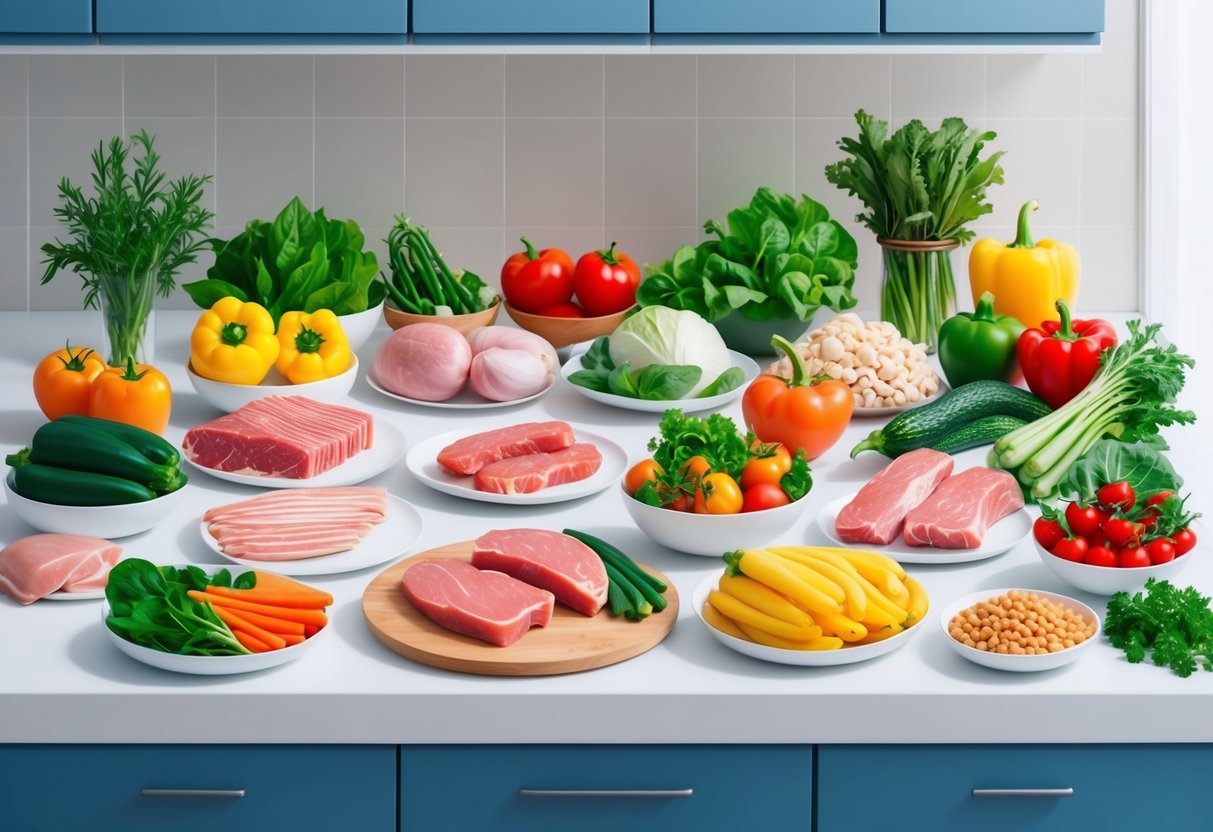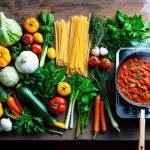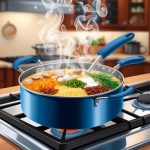
For anyone looking to boost their nutrition and simplify their meal planning routine, high-protein meals offer a convenient and satisfying solution. High-protein meal prep makes it simple to stay full, support muscle growth, and avoid last-minute, less healthy choices throughout the week.
With a wide range of options—from hearty chicken bowls and lean seafood dishes to egg muffins and vegetarian-friendly meals—there are high-protein recipes suitable for every taste and schedule.
Meal prep enthusiasts and busy individuals alike can benefit from preparing protein-packed dishes ahead of time. This ensures each meal delivers the nutrients needed for sustained energy and improved satiety.
Dishes like seared tuna steak with sweet potato wedges or sheet-pan egg bakes help keep weekly menus interesting while saving valuable time in the kitchen. Proven approaches such as batch-cooking, portioning, and creative use of proteins are highlighted in several easy high-protein meal prep ideas and muscle-building meal prep recipes.
From customizable bowls to convenient grab-and-go breakfasts, high-protein meal prep caters to both seasoned home cooks and those just starting their healthy eating journey.
Understanding High-Protein Meals
High-protein meals play a significant role in supporting muscle growth, weight management, and satiety. Choosing the right type and amount of protein helps individuals reach fitness and nutrition goals efficiently and sustainably.
Benefits of High Protein Diets
High-protein diets can help preserve lean muscle mass during weight loss. They also promote muscle recovery and growth after resistance training or exercise.
Studies show that a higher protein intake enhances satiety, which may contribute to reduced calorie intake throughout the day. Meals that consistently provide at least 15 grams of protein per serving help support metabolic health and may lower hunger signals.
Many meal prep ideas focus on lean protein sources like chicken, fish, beans, and legumes. These foods deliver essential amino acids the body cannot make on its own, playing key roles in tissue repair and immune function.
Incorporating both animal and plant-based protein sources gives variety and maximizes nutrient intake. For easy, filling options, refer to these high protein meal prep ideas.
Daily Protein Needs
Protein requirements vary based on age, activity level, and individual health goals. The Recommended Dietary Allowance (RDA) for most adults is 0.8 grams per kilogram of body weight daily.
Those aiming to build muscle, lose fat, or support athletic performance often benefit from 1.2–2.0 grams per kilogram of body weight each day. Elderly adults, athletes, and those recovering from illness or injury may require higher protein intake to prevent muscle loss and support overall health.
Distributing protein intake evenly across meals, such as aiming for at least 15 grams of protein at breakfast, lunch, and dinner, helps optimize muscle protein synthesis. Tracking daily protein, using food labels or online tools, can ensure adequate amounts are consumed.
This is important for both omnivores and those on plant-based diets, where attention to complete protein sources is vital.
Protein Quality and Sources
Protein quality depends on the amount and balance of essential amino acids present. Animal-based proteins like eggs, dairy, poultry, and fish are considered complete proteins because they contain all nine essential amino acids.
These are vital for muscle repair, hormone production, and immune support. Plant-based protein sources vary in quality.
Foods like soy, quinoa, and buckwheat are complete proteins, but most plant-based options—such as beans, lentils, nuts, and whole grains—are considered incomplete. Combining different plant-based proteins throughout the day helps ensure a full array of essential amino acids is obtained.
A mix of protein sources not only supports nutritional needs, but also adds flavors, textures, and nutrients to meal prep. Explore practical high-protein meal prep recipes to easily meet daily protein goals with both animal and plant-based foods.
How to Prepare High-Protein Meals Efficiently
Creating high-protein meals for meal prep is easier with an organized approach and careful food choices. Efficient meal planning, practical prep steps, and smart storage all help save time, cut costs, and minimize food waste.
Meal Prep Basics
Success with high-protein meal prep starts with selecting protein-rich ingredients such as chicken breast, tofu, beans, lentils, eggs, and lean beef. Preparing proteins in larger batches allows for quick portioning and prevents the urge to order takeout on busy days.
Using containers with secure lids keeps meals fresh and prevents cross-contamination. Portioning out meals right after cooking helps maintain nutritional consistency and makes it easier to grab food on the go.
An easy way to boost protein without much effort is by adding chickpeas, quinoa, or Greek yogurt to salads. A streamlined workflow—batch cooking, chopping vegetables, and pre-cooking grains—reduces time spent in the kitchen throughout the week.
Utilizing sheet pan recipes or one-pot dishes simplifies cleanup and allows for variety without extra effort.
Meal Planning Strategies
Effective meal planning relies on building balanced meals that feature a mix of protein, whole grains, and vegetables. Start by mapping out all meals for the week and choosing recipes that share similar protein sources to cut down on grocery expenses.
Rotating ingredients like chicken, turkey, and plant-based proteins throughout the week prevents boredom while ensuring a steady nutrient intake. Integrating simple recipes, like stir-fries or overnight oats with yogurt and nut butter, makes preparation and portioning more manageable.
A weekly planning table can help:
| Day | Protein | Grain | Vegetable |
|---|---|---|---|
| Monday | Chicken | Brown rice | Broccoli |
| Tuesday | Lentils | Quinoa | Peppers |
| Wednesday | Ground turkey | Whole wheat pasta | Zucchini |
Reviewing recipes with overlapping ingredients cuts shopping time and limits food waste. Planning ahead avoids last-minute decisions that often lead to lower protein and less balanced options.
Reducing Food Waste
Minimizing food waste is crucial for both sustainability and budget. Planning protein portions based on the number of meals needed helps reduce overbuying.
Freezing leftover cooked protein or using scraps in soups and salads keeps ingredients from being discarded. Creative use of ingredients—such as turning leftover roasted vegetables into omelets or burrito wraps—ensures minimal waste.
Storing proteins and cooked foods in airtight containers extends their shelf life and preserves flavor. Using clear containers makes it easy to identify what needs to be eaten first.
Meal prepping with a focus on portion control and strategic storage reduces spoilage and saves money. Adapting recipes to utilize what’s already available in the pantry or fridge encourages resourcefulness and decreases the environmental impact of meal prepping.
For more tips, readers can explore meal prep ideas that prioritize both nutrition and waste reduction.



